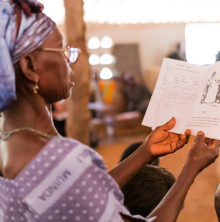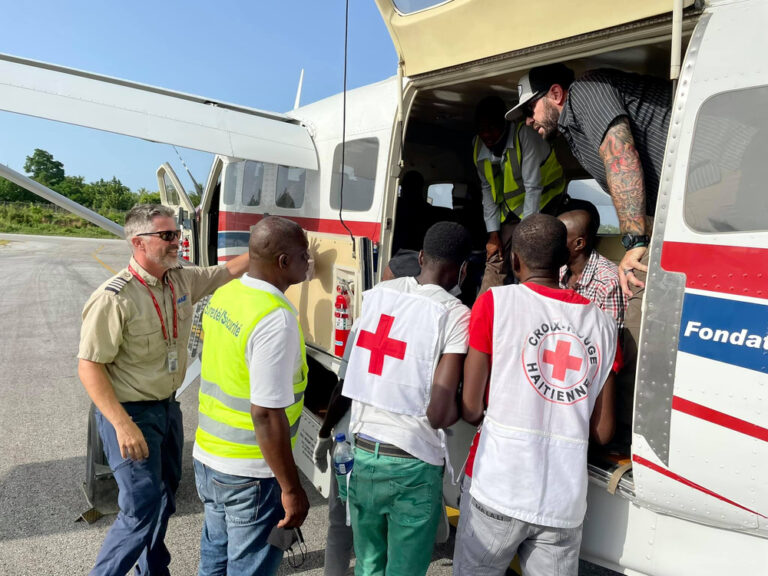Above: Follow along with pilot Daniel Perez in Papua, Indonesia! See what a day in the life of an MAF pilot is like.
Below: Kees Janse shares this recent day in his life as an MAF pilot in Papua, Indonesia.
As my alarm clock goes off around 4:30 in the morning, I (Kees) can already hear the steady rain on the roof of our house. Usually this is not a good sign. However, this morning I decide to get out of bed anyway to see what the day will bring. There is no weather forecast, so every day it is a surprise what the weather will be like. Sometimes it is worse than what you expect, sometimes it is better than expected.
Today is one of those days where it is better than expected. Around 5:00 a.m. it has stopped raining, and when I step out of the house I can vaguely see the shape of the mountains surrounding the Baliem Valley where we live. This is hopeful. Five minutes later I’m at the airport, where there is already quite a group of people waiting. They have come to say goodbye to the passengers that will be travelling to Langda.
5:30 a.m. – The Kodiak that I will be using today is getting its daily preflight inspection. Meanwhile, our local employees help the passengers to board the airplane. Before I start the engine, we pray together: “Lord guide us today and keep us safe. Use us as an instrument in your hands.” It is 5:45 when we finally take off.

6:20 a.m. – We have safely arrived in Langda. “Kees, we have planned a brief ceremony in relation to the new Church building we plan to build. The people you flew in today have come to lay the first stone. Can you join us behind the airplane for a minute?” We each receive a beautiful, locally made ‘noken,’ which is used as a bag. This is their way of saying ”thank you for coming to our village.” In response, I explain to them that unfortunately I cannot stay much longer because my flight schedule for today is pretty full. They understand.
6:45 a.m. – The wheels of the airplane touch down on the pavement. We are back at our home base in Wamena. I have just shut down the engine when I hear from our ground personnel that there are security issues in Mamit. “Your flight schedule will likely be changed. There was some violence there yesterday and the victim’s family is planning to take revenge. Medical staff and teachers have to be evacuated as soon as possible.”
8:00 a.m. – “Is it okay if I first make the quick flight to Silimo to bring the kids home from the SPH (Sekolah Papua Harapan) school in Sentani?” I ask our flight scheduler, Edison. “The weather there is still open at the moment, but it will not last very long.” Edison agrees. Twenty minutes later we are on the ground in Silimo. “Do you have any passengers for Wamena?” I ask the MAF agent there. “Yes, 7 adults and a patient.” The local nurse approaches me: “The patient is a lady who gave birth last week. However, she picked up the heavy work in the gardens too quickly. She now has a bowel prolapse, for which she needs to go to the hospital in Wamena.” I have very little medical knowledge, but when I see how several people need to help the patient get into the airplane, I am glad we were still able to do this flight to Silimo today. For a brief a moment I see a glimpse of God’s sovereign hand in today’s events. He wanted us to be here today, in order to help this woman.
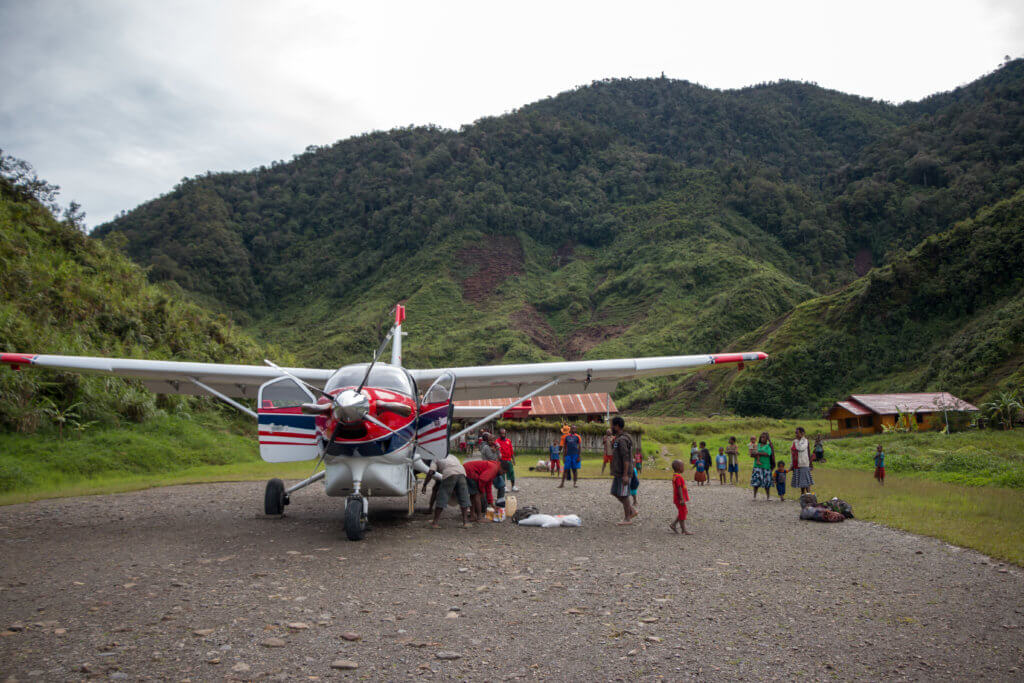
9:00 a.m. – On the next flight to Mamit, I pass my colleague Nathan in the air as he is on his way back to Wamena with nine passengers he just picked up in Mamit. “It is still quiet around the airstrip. No riots at the moment, so it is safe to land,” he says. I am glad to hear that. The ladies who are on board of my aircraft a few minutes later are clearly relieved as we leave Mamit. All seven of them are working as teachers at the SLH (Sekolah Lentera Harapan) school there. MAF supports the SLH schools heavily, because we believe that good quality Christian education is crucial for the future of Papua.
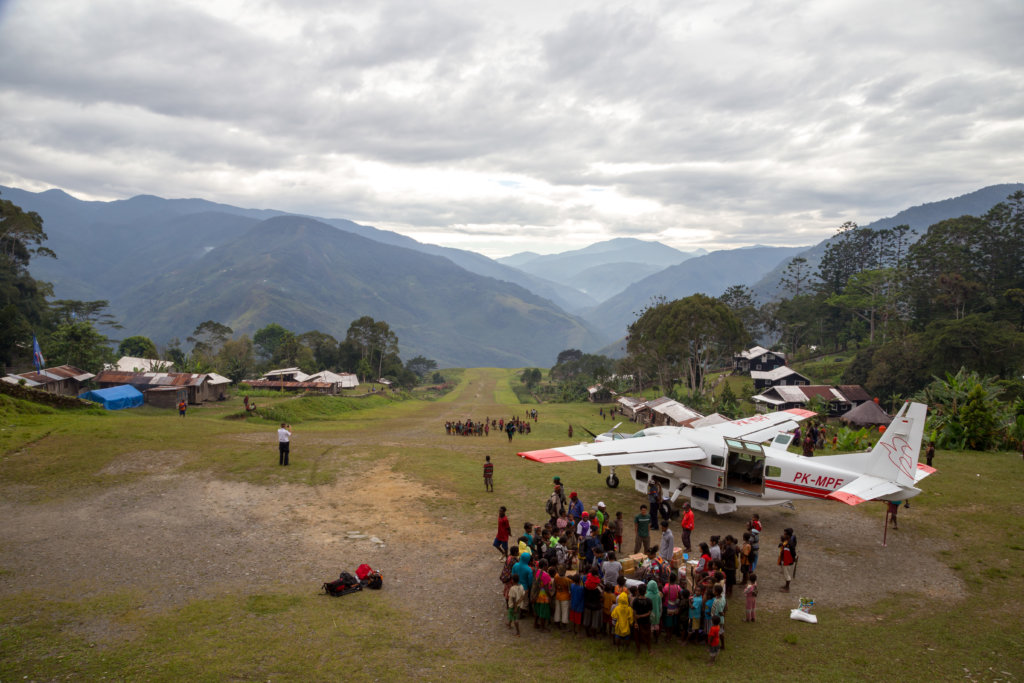
10:00 a.m. – It is normally too late to go to Nipsan at this point. Usually we go there before 10 am, because of the tricky winds that tend to be there later in the morning. Today I decide to still give it a try. The MAF airstrip agent in Nipsan is reporting over the radio that the wind is calm at the moment. Soon we are on our way to Nipsan with five kids on board from the SPH school in Sentani. We have to climb to 14,000 feet in order to fly through the clouds over the high ranges. Fortunately, Nipsan itself is still open, the wind however is not as calm as I hoped it would be. It is 11:00 a.m. by now. After consulting another pilot over the HF radio, I decide to fly an approach. The airplane is tossed around a bit, but in the end, we are able to safely land. It is wonderful to see how the school kids are welcomed by their families!
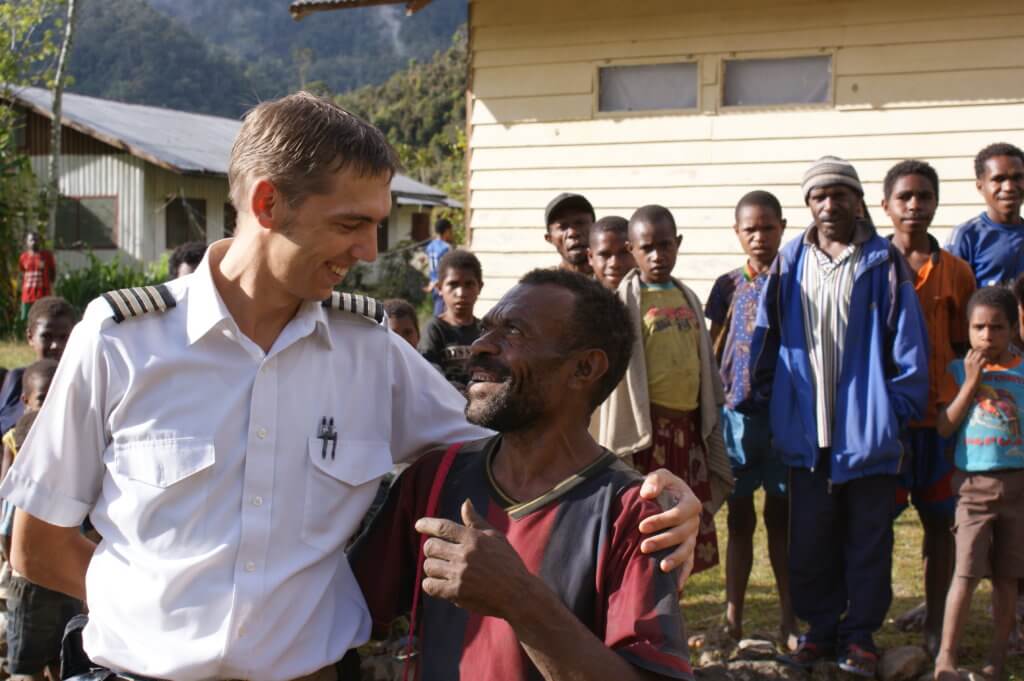
12:00 p.m. – Once we are back in Wamena, I quickly grab a sandwich and a cup of coffee. There is one flight left to be done today. It’s possibly the most important flight we had planned for today, to Obukain, in the southern lowlands. Ed and Valerie Johnson have been working there for over twenty years with the mission organization World Team. Yesterday evening I received a message from Ed: “This morning a lady fell in the fire. She is severely burned in her face and upper body.” The lady’s name is Yuritna, and she is epileptic. She likely fell into the fire when she had a seizure, and nobody was there to help her. Today we will pick her up and bring her to Wamena. I climb to 14,000 feet and then descend to sea level when I get to the south of the ranges. Exactly overhead Obukain I break out of the clouds at about 3000 feet. Wherever you look, there is tropical forest that stretches out till the far horizon. In the middle of it, there is the small grass airstrip of Obukain with about 20 typical lowland huts and the Johnson’s house around it.
Upon landing I notice a few people coming out of one of the huts. They are carrying Yuritna with them. Only on a few occasions in the past have I seen burn wounds like this… Her eyes are so swollen that she cannot see anymore. Her lips too are swollen to the point that she cannot talk either. The desperate father sinks on his knees to the ground next to the airplane as we carry his daughter into the airplane. He is crying, not knowing where we will bring his daughter and whether he will ever see her again. My heart breaks for him and for Yuritna’s seven-year-old daughter who also stays behind. I purposely have to distance myself from the emotions in order to focus on the flight back. At 1:45 p.m. we land in Wamena. Yuritna is directly transported to the hospital. I complete a post flight inspection on the airplane, since my colleague Nathan will be using it the following day. As always, there is still paperwork and email to do.
3:30 p.m. – I close the office door behind me. The day was different from what I expected in many ways! What a wonderful thing it is, to know that the Lord leads. He controls all things: the weather, our health, the shortage of pilots and mechanics, etc. Everything lies in his hands. His work and his plan will succeed. This was true today and will be the case tomorrow as well!

